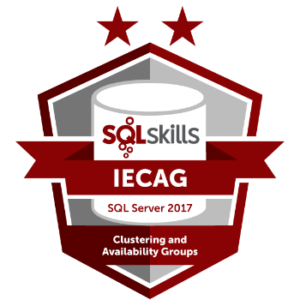SQL Server professionals may be reluctant to start using PowerShell. After all, you already know T-SQL well and can do a lot with that to manage SQL Server. I’ve been using PowerShell to manage SQL Server for the last 5 years and it has revolutionized how I interact with SQL Server. For example, … Continue reading 6 Reasons to Learn PowerShell
You’re a data professional and you’ve been given the keys to a new SQL Server environment. You know you need to build a SQL Server inventory so you know what is in your environment, but how do you get that information? One of the things I have talked about in other posts is how to … Continue reading How to Build a SQL Server Inventory Using PowerShell
I recently needed to configure log shipping for multiple databases at once as part of a migration project. I turned to PowerShell to do this. But before we get to that part, this post assumes that you’ve done the upfront work to create shares for the backups to write to and for the backups to … Continue reading How To Use Powershell to Configure Multiple Databases for Log Shipping
Hello dear reader! This is the third post in a series to help you get started automating things with PowerShell. You will be looking at how to start and stop SQL Server using PowerShell as well as setting the Max Server Memory setting, measuring free disk space and more. This series is just an introduction … Continue reading Introduction To PowerShell For The DBA Part 3
In Part 1 of this series we began to look at how you can leverage PowerShell as a DBA and there was a brief discussion about automation. Today you will experiment with the DBATools command Copy-DbaLogin and learn about Out-Gridview and the -whatif switch. Let’s suppose you have one, or more logins you need to … Continue reading Introduction To PowerShell For The DBA Part 2
Automating Tasks With PowerShell What we’re really talking about in this series is automation, specifically by using PowerShell. Now, in simple terms, automation is about removing the human, manual element in doing tasks. Why should you care about that? Automation will provide the following benefits: Automation saves you time Automation provides consistency Automation results … Continue reading Introduction To PowerShell for the DBA Part 1
I’ve been doing migrations fairly continuously for the past 18 months. PowerShell has been my primary mechanism for many parts of the process, including copying jobs from the source SQL Server to the target. That has worked almost without incident each time. However, recently, an app team noticed that there were SQL Server Agent … Continue reading Fixing Missing SQL Agent Jobs After a Migration
As data professionals responsible for SQL Server, it is drilled into our heads that we need to take backups. But, how do we know we actually have backups available to us when we need them? How can we verify that a backup has been taken? Some types of auditing that an employer has to … Continue reading 3 ways to verify that a backup has taken place
Today is end of support for SQL Server 2012. May it rest in peace. Migrating a SQL Server can be a lot of work. There are so many things to think about. It’s a pain. Let me offer you a template of steps … Continue reading SQL Server 2012 End of Support Migration Plan
SQL Server 2012 extended support ends July 12, 2022 – no more patches of any kind. I hope this isn’t news to you, and you’re already planning a migration. Before I post about a migration plan, though, I’d like to take a look back at SQL Server 2012. What were some new … Continue reading A Look Back at SQL Server 2012



